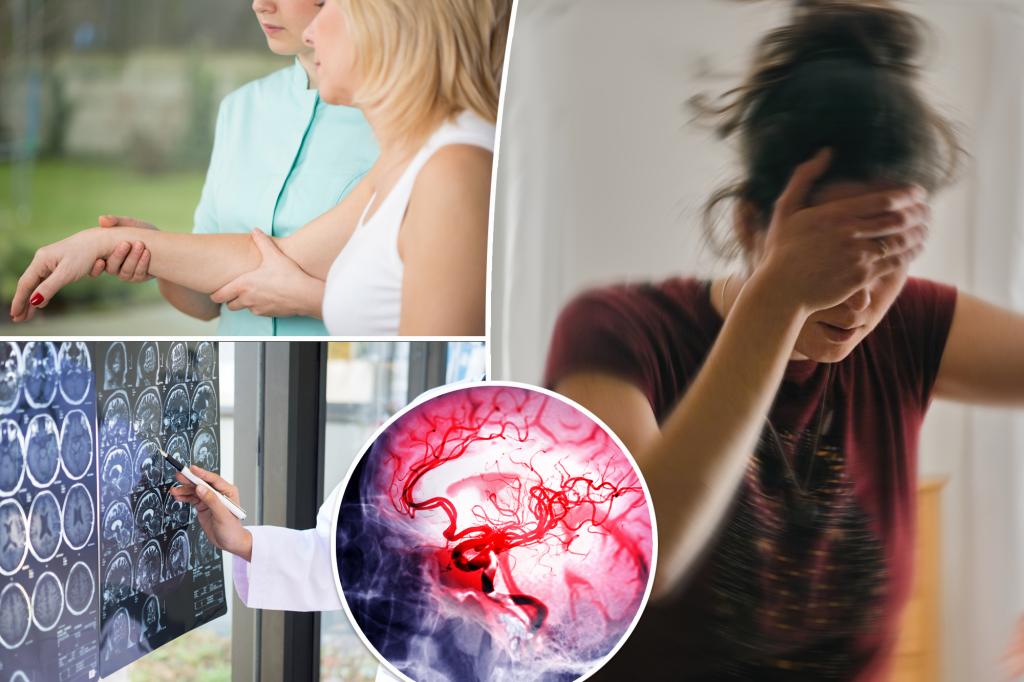More than 600,000 Americans are expected to experience a first stroke this year, but up to 80% of these events may be preventable.
American Stroke Association (ASA) We have published the latest advice On Monday, it urged health care professionals to screen for stroke risk factors, including high blood pressure, high cholesterol, high blood sugar and obesity.
“The most effective way to reduce the incidence of stroke and stroke-related death is to prevent a stroke in the first place, known as primary prevention,” said Dr. Cheryl D. Bushnell, chair of the ASA guideline development group.
“Some people are at increased risk of stroke, whether the cause is genetics, lifestyle, biological factors, or social determinants of health, and in some cases receive appropriate screening to identify risk. Some people don’t,” Bushnell continued. ”
A stroke occurs when blood flow to the brain is blocked or when a blood vessel ruptures and leaks blood into the brain.
Stroke was the fourth leading cause of death in the United States last year, killing 162,600 people. According to preliminary data.
The latest ASA recommendations, which replaced the 2014 guidelines, encourage adults to follow a Mediterranean diet regardless of their risk of stroke. A plant-based eating plan emphasizes fruits, vegetables, whole grains, and healthy fats rather than red meat and sugar.
The ASA, a division of the American Heart Association, also recommends reducing the risk of stroke by getting regular exercise, getting enough sleep, maintaining a healthy weight, controlling cholesterol, controlling blood pressure and blood sugar levels, and avoiding smoking. is proposed.
Health professionals should screen patients for sedentary behavior. Adults should do at least 150 minutes of moderate-intensity aerobic exercise per week, or 75 minutes of vigorous-intensity exercise per week, or a combination of both throughout the week.
The ASA said adults should also be tested and educated about the importance of non-medical factors such as education, financial stability, access to care and healthy food, and neighborhood walkability.
Women, for their part, may need to be tested for stroke risk more frequently than men.
Their risk factors include the use of oral contraceptives and pregnancy complications such as high blood pressure and premature birth. Women also tend to live longer. Approximately 55,000 more women than men have a stroke each year in the United States. According to the ASA.
To provide information on preventive treatment, the American Heart Association released an updated report last year. (PREVENT) Risk Calculator This allows us to estimate the 10-year and 30-year risk of stroke and heart disease for people over the age of 30.
“Understanding which people are at high risk for first-time seizures and providing support to maintain heart and brain health can help prevent first-ever seizures,” Bushnell said.
Warning signs of stroke
Experts use the acronym “BE FAST” to quickly recognize the warning signs of a stroke and know when to call 911.
- B stands for balance, or difficulty walking.
- E stands for visual acuity. You may experience double vision, blurred vision, or decreased visual acuity.
- F stands for droopy eyes or a crooked smile on the face.
- A stands for weakness or numbness in the arm. This also applies to muscle weakness and numbness in the legs.
- S stands for change due to speech.
- T stands for time and indicates the time to call 911.

